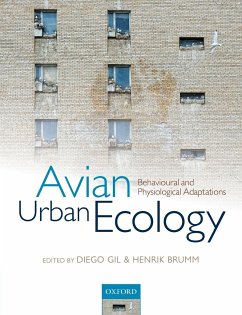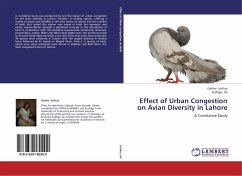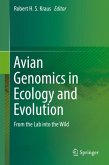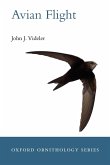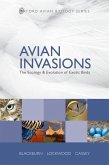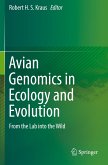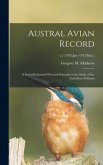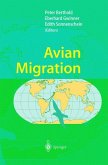Gil & Brumm
AVIAN URBAN ECOLOGY P
Gil & Brumm
AVIAN URBAN ECOLOGY P
- Broschiertes Buch
- Merkliste
- Auf die Merkliste
- Bewerten Bewerten
- Teilen
- Produkt teilen
- Produkterinnerung
- Produkterinnerung
This edited volume adopts an evolutionary framework to explore how pre-existing differences in life history, behaviour, and physiology of birds may determine the course of their adaptation to urban habitats.
Andere Kunden interessierten sich auch für
![Effect of Urban Congestion on Avian Diversity in Lahore Effect of Urban Congestion on Avian Diversity in Lahore]() Gaitee JoshuaEffect of Urban Congestion on Avian Diversity in Lahore32,99 €
Gaitee JoshuaEffect of Urban Congestion on Avian Diversity in Lahore32,99 €![Avian Genomics in Ecology and Evolution Avian Genomics in Ecology and Evolution]() Avian Genomics in Ecology and Evolution120,99 €
Avian Genomics in Ecology and Evolution120,99 €![Avian Flight Avian Flight]() John J. VidelerAvian Flight93,99 €
John J. VidelerAvian Flight93,99 €![Avian Invasions Avian Invasions]() Tim M BlackburnAvian Invasions85,99 €
Tim M BlackburnAvian Invasions85,99 €![Avian Genomics in Ecology and Evolution Avian Genomics in Ecology and Evolution]() Avian Genomics in Ecology and Evolution119,99 €
Avian Genomics in Ecology and Evolution119,99 €![Austral Avian Record; a Scientific Journal Devoted Primarily to the Study of the Australian Avifauna; v.1 (1912: Jan.-1913: Mar.) Austral Avian Record; a Scientific Journal Devoted Primarily to the Study of the Australian Avifauna; v.1 (1912: Jan.-1913: Mar.)]() Austral Avian Record; a Scientific Journal Devoted Primarily to the Study of the Australian Avifauna; v.1 (1912: Jan.-1913: Mar.)34,99 €
Austral Avian Record; a Scientific Journal Devoted Primarily to the Study of the Australian Avifauna; v.1 (1912: Jan.-1913: Mar.)34,99 €![Avian Migration Avian Migration]() Peter Berthold / Eberhard Gwinner / Edith Sonnenschein (eds.)Avian Migration229,99 €
Peter Berthold / Eberhard Gwinner / Edith Sonnenschein (eds.)Avian Migration229,99 €-
-
-
This edited volume adopts an evolutionary framework to explore how pre-existing differences in life history, behaviour, and physiology of birds may determine the course of their adaptation to urban habitats.
Hinweis: Dieser Artikel kann nur an eine deutsche Lieferadresse ausgeliefert werden.
Hinweis: Dieser Artikel kann nur an eine deutsche Lieferadresse ausgeliefert werden.
Produktdetails
- Produktdetails
- Verlag: Oxford University Press(UK)
- Seitenzahl: 240
- Erscheinungstermin: 14. November 2013
- Englisch
- Abmessung: 246mm x 189mm x 14mm
- Gewicht: 473g
- ISBN-13: 9780199661589
- ISBN-10: 0199661588
- Artikelnr.: 39338771
- Herstellerkennzeichnung
- Libri GmbH
- Europaallee 1
- 36244 Bad Hersfeld
- gpsr@libri.de
- Verlag: Oxford University Press(UK)
- Seitenzahl: 240
- Erscheinungstermin: 14. November 2013
- Englisch
- Abmessung: 246mm x 189mm x 14mm
- Gewicht: 473g
- ISBN-13: 9780199661589
- ISBN-10: 0199661588
- Artikelnr.: 39338771
- Herstellerkennzeichnung
- Libri GmbH
- Europaallee 1
- 36244 Bad Hersfeld
- gpsr@libri.de
Diego Gil is a senior scientist at the Spanish Research Council (CSIC), and he is based at the Museo Nacional de Ciencias Naturales in Madrid. His main interests are the study of bird song and the transmission of hormones in avian eggs. He combines an evolutionary ecology perspective with the study of the proximal physiological mechanisms that underpin evolutionary adaptations. He has published more than 50 research articles, and has been editor of Animal Behaviour. Henrik Brumm heads a research group at the Max Planck Institute for Ornithology in Seewiesen, Germany. He is a former Editor of Behaviour and an Editor of Behavioral Ecology and Sociobiology In 2005, he was appointed as a fellow at the Institute for Advanced Study Berlin. He has been studying bird behaviour and ecology in many parts of the world and published over 50 articles and scientific papers.
* Introduction
* Part 1: The Urban Environment
* 1: The challenges of urban living
* 2: The impact of artificial light on avian ecology
* 3: Wild bird feeding (probably) affects avian urban ecology
* Part 2: Behaviour and Physiology
* 4: Attention, habituation, and antipredator behaviour: implications
for urban birds
* 5: Behavioral and ecological predictors of urbanization
* 6: Acoustic communication in the urban environment: patterns,
mechanisms, and potential consequences of avian song adjustments
* 7: The impact of anthropogenic noise on avian communication and
fitness
* 8: Reproductive adaptations of urban birds: environmental cues and
mechanisms
* 9: The impacts of urbanization on avian disease transmission and
emergence
* Part 3: Evolutionary Processes
* 10: Understanding the mechanisms of phenotypic responses following
colonization of urban areas: From plastic to genetic adaptation
* 11: Landscape genetics of urban bird populations
* 12: Reconciling innovation and adaptation during recurrent
colonization of urban environments: molecular, genetic, and
developmental bases
* Part 4: Case Studies
* 13: Acoustic, morphological and genetic adaptations to urban habitats
in the silvereye (Zosterops lateralis)
* 14: Human-induced changes in the dynamics of species coexistence: an
example with two sister species
* 15: The application of signal transmission modelling in conservation
biology: on the possible impact of a projected motorway on avian
communication
* 16: The importance of wooded urban green areas for breeding birds: a
case study from Northern Finland
* Part 1: The Urban Environment
* 1: The challenges of urban living
* 2: The impact of artificial light on avian ecology
* 3: Wild bird feeding (probably) affects avian urban ecology
* Part 2: Behaviour and Physiology
* 4: Attention, habituation, and antipredator behaviour: implications
for urban birds
* 5: Behavioral and ecological predictors of urbanization
* 6: Acoustic communication in the urban environment: patterns,
mechanisms, and potential consequences of avian song adjustments
* 7: The impact of anthropogenic noise on avian communication and
fitness
* 8: Reproductive adaptations of urban birds: environmental cues and
mechanisms
* 9: The impacts of urbanization on avian disease transmission and
emergence
* Part 3: Evolutionary Processes
* 10: Understanding the mechanisms of phenotypic responses following
colonization of urban areas: From plastic to genetic adaptation
* 11: Landscape genetics of urban bird populations
* 12: Reconciling innovation and adaptation during recurrent
colonization of urban environments: molecular, genetic, and
developmental bases
* Part 4: Case Studies
* 13: Acoustic, morphological and genetic adaptations to urban habitats
in the silvereye (Zosterops lateralis)
* 14: Human-induced changes in the dynamics of species coexistence: an
example with two sister species
* 15: The application of signal transmission modelling in conservation
biology: on the possible impact of a projected motorway on avian
communication
* 16: The importance of wooded urban green areas for breeding birds: a
case study from Northern Finland
* Introduction
* Part 1: The Urban Environment
* 1: The challenges of urban living
* 2: The impact of artificial light on avian ecology
* 3: Wild bird feeding (probably) affects avian urban ecology
* Part 2: Behaviour and Physiology
* 4: Attention, habituation, and antipredator behaviour: implications
for urban birds
* 5: Behavioral and ecological predictors of urbanization
* 6: Acoustic communication in the urban environment: patterns,
mechanisms, and potential consequences of avian song adjustments
* 7: The impact of anthropogenic noise on avian communication and
fitness
* 8: Reproductive adaptations of urban birds: environmental cues and
mechanisms
* 9: The impacts of urbanization on avian disease transmission and
emergence
* Part 3: Evolutionary Processes
* 10: Understanding the mechanisms of phenotypic responses following
colonization of urban areas: From plastic to genetic adaptation
* 11: Landscape genetics of urban bird populations
* 12: Reconciling innovation and adaptation during recurrent
colonization of urban environments: molecular, genetic, and
developmental bases
* Part 4: Case Studies
* 13: Acoustic, morphological and genetic adaptations to urban habitats
in the silvereye (Zosterops lateralis)
* 14: Human-induced changes in the dynamics of species coexistence: an
example with two sister species
* 15: The application of signal transmission modelling in conservation
biology: on the possible impact of a projected motorway on avian
communication
* 16: The importance of wooded urban green areas for breeding birds: a
case study from Northern Finland
* Part 1: The Urban Environment
* 1: The challenges of urban living
* 2: The impact of artificial light on avian ecology
* 3: Wild bird feeding (probably) affects avian urban ecology
* Part 2: Behaviour and Physiology
* 4: Attention, habituation, and antipredator behaviour: implications
for urban birds
* 5: Behavioral and ecological predictors of urbanization
* 6: Acoustic communication in the urban environment: patterns,
mechanisms, and potential consequences of avian song adjustments
* 7: The impact of anthropogenic noise on avian communication and
fitness
* 8: Reproductive adaptations of urban birds: environmental cues and
mechanisms
* 9: The impacts of urbanization on avian disease transmission and
emergence
* Part 3: Evolutionary Processes
* 10: Understanding the mechanisms of phenotypic responses following
colonization of urban areas: From plastic to genetic adaptation
* 11: Landscape genetics of urban bird populations
* 12: Reconciling innovation and adaptation during recurrent
colonization of urban environments: molecular, genetic, and
developmental bases
* Part 4: Case Studies
* 13: Acoustic, morphological and genetic adaptations to urban habitats
in the silvereye (Zosterops lateralis)
* 14: Human-induced changes in the dynamics of species coexistence: an
example with two sister species
* 15: The application of signal transmission modelling in conservation
biology: on the possible impact of a projected motorway on avian
communication
* 16: The importance of wooded urban green areas for breeding birds: a
case study from Northern Finland

